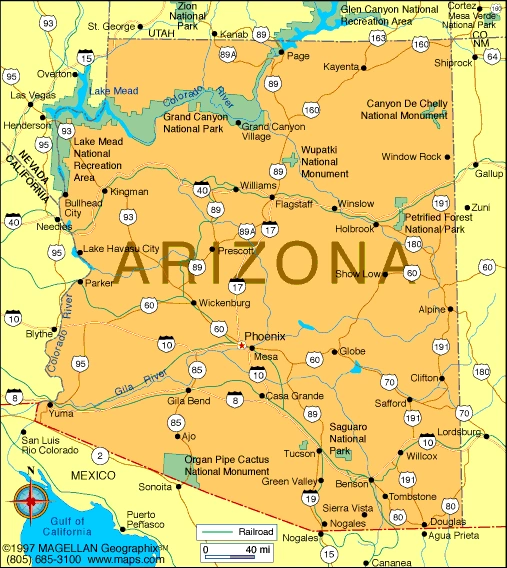Phoenix (city, Arizona) - geography.
Publié le 04/05/2013

Extrait du document


«
The company’s irrigation system followed the network of canals that were built there by the Hohokam some 500 years earlier.
In October 1870, several settlers foundedthe site of modern Phoenix.
In recognition of the former Hohokam culture, settler Darrell Duppa likened the new community to the phoenix, a mythological bird thatconsumed itself by fire every 500 years and arose anew from the ashes.
Thereafter, the group adopted Phoenix as the settlement’s name.
Within a short time the areawas producing hay, beef, flour, figs, beer, ice, eggs, and butter for the Arizona territory’s growing population, particularly the mining boomtowns.
Canals in the Phoenixarea totaled about 386 km (about 240 mi) in 1886.
By 1875 the town had a courthouse, a school, saloons, and dance halls.
An electricity generating plant run by steam, one of the first in the west, was built in 1886, andthe railroad arrived in 1887.
Phoenix was incorporated as a city in 1881, and in 1889 it became the capital of Arizona Territory.
It remained the capital when Arizonabecame a state in 1912.
The city’s population first exceeded that of Tucson in 1920, making it the state’s largest city.
After massive floods of the Salt River in 1891 wiped out many of the canals, a huge modern flood control and irrigation system was developed around Phoenix.
Thefederal government in 1902 authorized the Salt River Project, and the completion of the Theodore Roosevelt Dam on the Salt in 1911 assured the city of an adequatewater supply and flood control, as well as a source of power for the development of industries.
Since then three other dams have been built on the Salt.
However, onseveral occasions in recent years the Salt River has flooded and caused damage to the area.
During World War II a number of military training bases and airfields were established near Phoenix.
Following the war, thousands of army and air force veterans settledhere.
In addition, retirees and others streamed into the Phoenix metropolitan area, spurred by the development of affordable and reliable air-conditioning.
Phoenixbecame the largest center of trade, transportation, finance, and government between Dallas, Texas, and the Pacific coast.
Between 1940 and 1950 the city’s populationincreased 63 percent; from 1950 to 1960 the increase was 300 percent.
In 1985 the Central Arizona Project, which brings water from the Colorado River, was completed.
This water has facilitated new housing developments and artificiallycreated lakes.
The tremendous growth of the city has brought with it problems, including urban sprawl, traffic congestion, air pollution, crime, unemployment, andhomelessness.
Many residents fear that the beauties of the desert are being destroyed by the rapid expansion of the city upon its natural periphery.
Contributed By:James W.
ByrkitMicrosoft ® Encarta ® 2009. © 1993-2008 Microsoft Corporation.
All rights reserved..
»
↓↓↓ APERÇU DU DOCUMENT ↓↓↓
Liens utiles
- Phoenix (city, Arizona) - geography.
- Buenos Aires (city) - geography.
- Dublin (city, Ireland) - geography.
- Mexico City - geography.
- Moscow (city, Russia) - geography.





